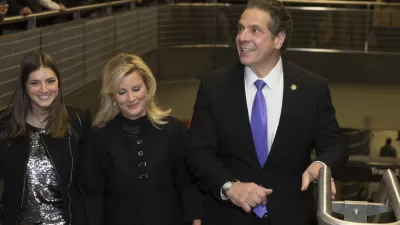While carpooling dropped 30% on the Bay Bridge after the first-time carpool charges were applied July 1, the Golden Gate Bridge reported a 68% drop, though it may be tied to confusion over which lane carpoolers should use with Fastrak requirement.
The seven state-owned bridges in the San Francisco Bay Area began charging $2.50 for carpools (previously free) during peak times, while tolled at full rate during off-peak and weekends. The six-county, district-owned Golden Gate Bridge applied its first-time, peak-time carpooling charge of $3 also on July 1.
"The result has been a 68 percent drop in the number of carpool users on the Golden Gate Bridge from about 2,085 to 665 daily compared to this time last year.
While the number of carpoolers has dropped, the number of cars crossing the span has been stable since the beginning of the month.
Bridge officials believe some carpools might be going through the FasTrak lanes but not stopping, and they are being charged a regular $5 toll. Carpools must have a FasTrak device, then go into a lane with a toll taker, who then counts the number of people in the car and punches in the discount."
Thanks to MTC Headlines
FULL STORY: Sharp decline in carpools as bridges impose tolls for first time

Planetizen Federal Action Tracker
A weekly monitor of how Trump’s orders and actions are impacting planners and planning in America.

Map: Where Senate Republicans Want to Sell Your Public Lands
For public land advocates, the Senate Republicans’ proposal to sell millions of acres of public land in the West is “the biggest fight of their careers.”

Restaurant Patios Were a Pandemic Win — Why Were They so Hard to Keep?
Social distancing requirements and changes in travel patterns prompted cities to pilot new uses for street and sidewalk space. Then it got complicated.

Platform Pilsner: Vancouver Transit Agency Releases... a Beer?
TransLink will receive a portion of every sale of the four-pack.

Toronto Weighs Cheaper Transit, Parking Hikes for Major Events
Special event rates would take effect during large festivals, sports games and concerts to ‘discourage driving, manage congestion and free up space for transit.”

Berlin to Consider Car-Free Zone Larger Than Manhattan
The area bound by the 22-mile Ringbahn would still allow 12 uses of a private automobile per year per person, and several other exemptions.
Urban Design for Planners 1: Software Tools
This six-course series explores essential urban design concepts using open source software and equips planners with the tools they need to participate fully in the urban design process.
Planning for Universal Design
Learn the tools for implementing Universal Design in planning regulations.
Heyer Gruel & Associates PA
JM Goldson LLC
Custer County Colorado
City of Camden Redevelopment Agency
City of Astoria
Transportation Research & Education Center (TREC) at Portland State University
Camden Redevelopment Agency
City of Claremont
Municipality of Princeton (NJ)



























